How to make living room ceilings look higher – 9 tricks used by interior designers
Make your living space feel bigger and grander with these clever design ideas
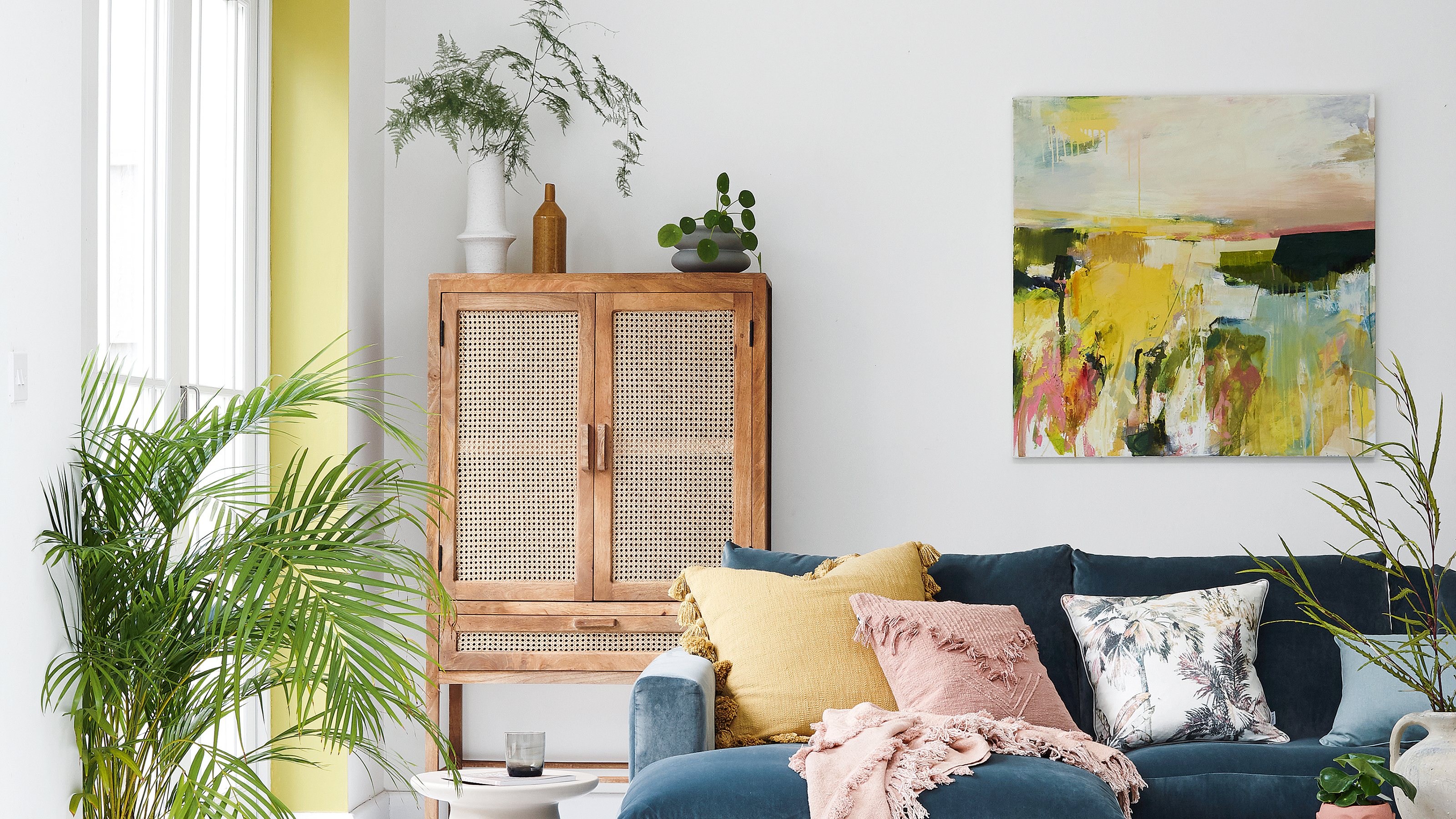

It’s easy to see why so many people want to know how to make living room ceilings look higher. Given the choice, most of us would go for high ceilings over low ones. Ceiling height completely changes how we feel in a space. High ceilings create a feeling of spaciousness, which makes us feel relaxed and at ease. On the flip side, low ceilings have the opposite effect and can be oppressive, making us feel confined and uneasy.
When you’re looking for living room ideas to elevate your space, it’s a good idea to start with the basics first. This means getting the bones of the room right with paint and floor choices to create the look and feel you’re after, before adding more decorative pieces and details. This includes deciding on whether you want to make living room ceilings look higher, and how you’ll achieve this.
To help you create the illusion of higher living room ceilings, we spoke to design experts who revealed their top tricks.
How to make living room ceilings look higher
‘Having a sense of height in your living room can truly transform the space making it look grander and elevated,’ says interior designer Athina Bluff. ‘Fortunately, even if we don't all have the luxury of tall ceilings, there are some nifty ways we can create the illusion of height through clever and tactical design features.’
‘Painting techniques are some of the most useful,’ continues Athina. ‘Here at Topology we always paint the skirting boards the same colour as the walls, so there is no 'divide' - this makes the wall appear taller.’
High ceilings are desirable and are often one of the first things a prospective buyer might notice about a property. Whether you’re making updates to increase the value of your home, or you simply want your ceilings to appear higher, to elevate the look and feel of your living room, there are various ways that you can create the illusion of high ceilings.
1. Go for floor-to-ceiling colour
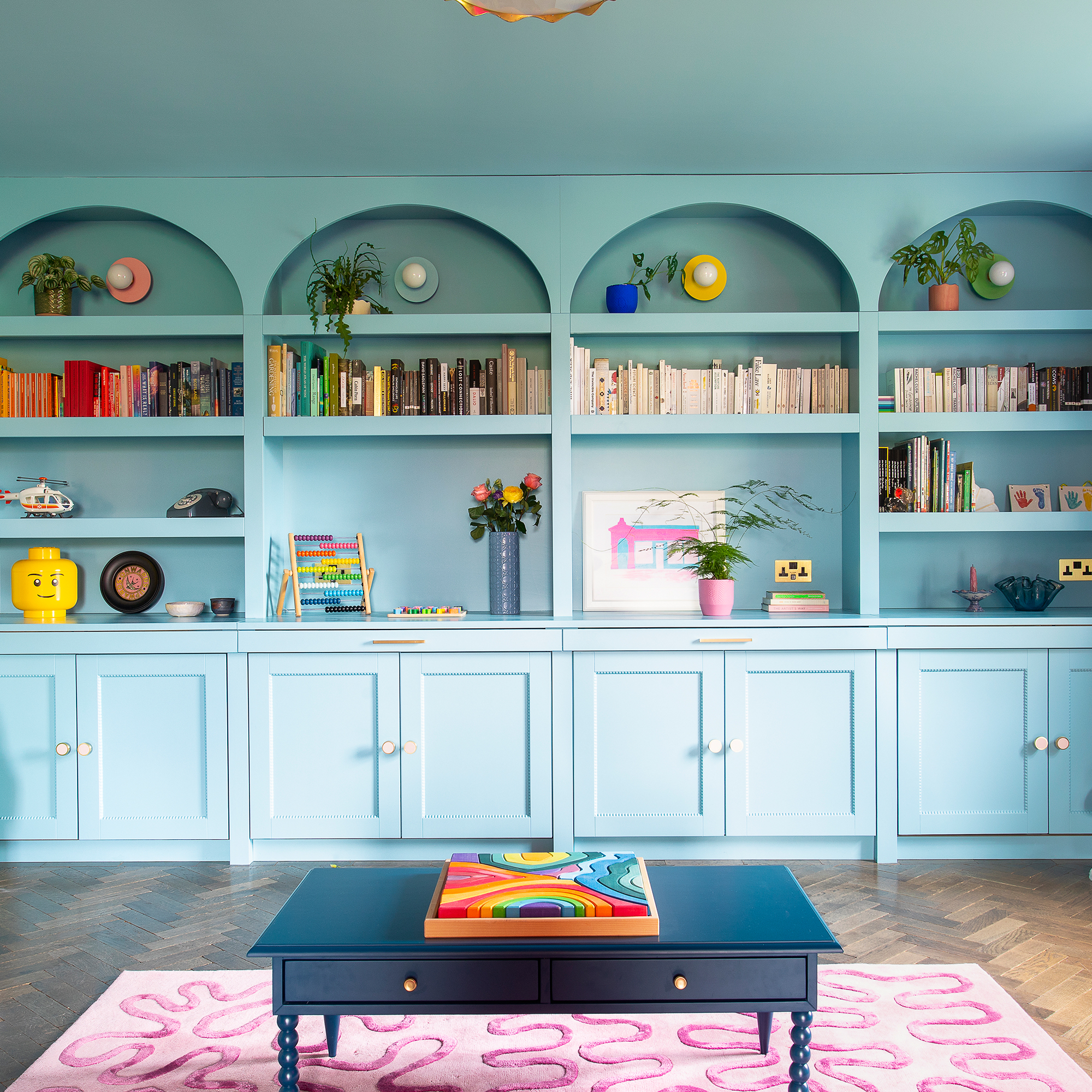
Avoid creating a cut off at the point where the wall meets the ceiling, as this will cause the ceiling to feel lower. Painting your walls and ceilings in the same colour blurs the line between where the ceiling begins, whereas a colour change will draw attention to it.
'Colour drenching is when you take one colour and paint everything in that room in the same colour, from walls to woodwork to your ceiling,’ says Tash Bradley, directory of interior design at Lick.
'Colour drenching is actually a softer way to decorate, giving you the licence to go bolder with the colour choices. It may feel intimidating, but the end result will give the illusion of a taller ceiling and an overall bolder scheme.'
2. Choose low-profile furniture

Wherever possible, choose furniture that doesn’t come above the mid-way point of your wall. Anything that finishes further up will make the space above look squat, instead of expansive and spacious.
‘Low-profile furniture acts as a secret weapon in your quest for a loftier-looking living room,’ explains designer Athina. ‘Think sleek sofas, coffee tables and armchairs that sit closer to the ground. This creates more visual space between the furniture and the ceiling, emphasising the vertical plane.'
'Furniture with slender legs is also one to consider as they visually ‘disappear’ and don’t block the flow of the eye upwards.’
3. If in doubt, stick to white
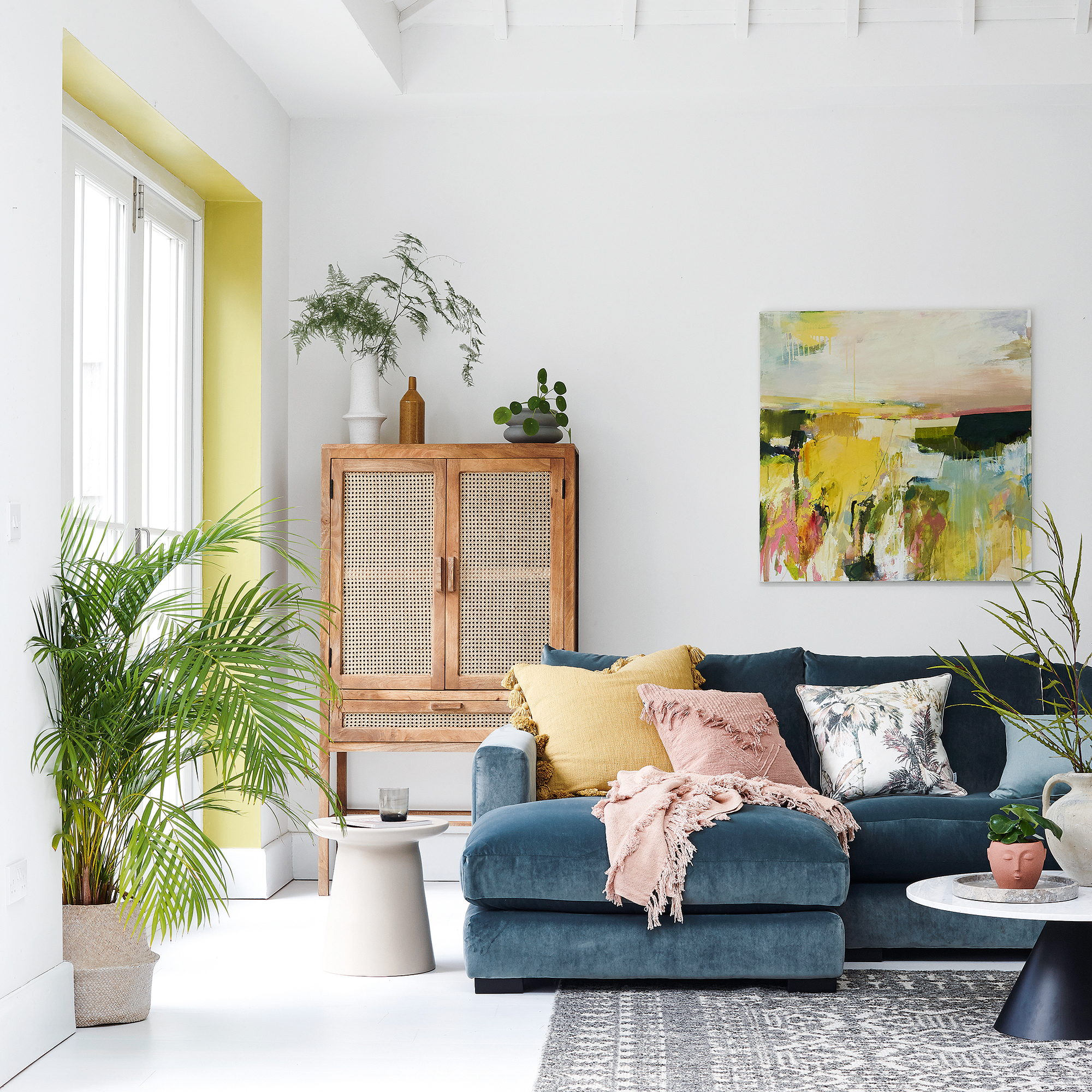
If you’re not sure about colour drenching, white is always a great option to make living room ceilings look higher. If in doubt, opt for all white walls and ceilings, which always creates a feeling of space. Opt for white walls and ceilings which will lift ceilings up and won’t highlight the point where the wall ends. Neutral living room ideas don’t have to be uninspiring either - it’s possible to create a welcoming and stylish space with neutrals.
If you want to paint your walls in a dark colour, avoid creating a harsh line between the ceiling and the walls. Instead try extending the walls upwards by installing coving to cover the point where the wall ends and the ceiling begins. Paint the coving in the same colour as your wall to add a few extra inches, making your ceilings appear higher.
4. Hang curtains as high as possible
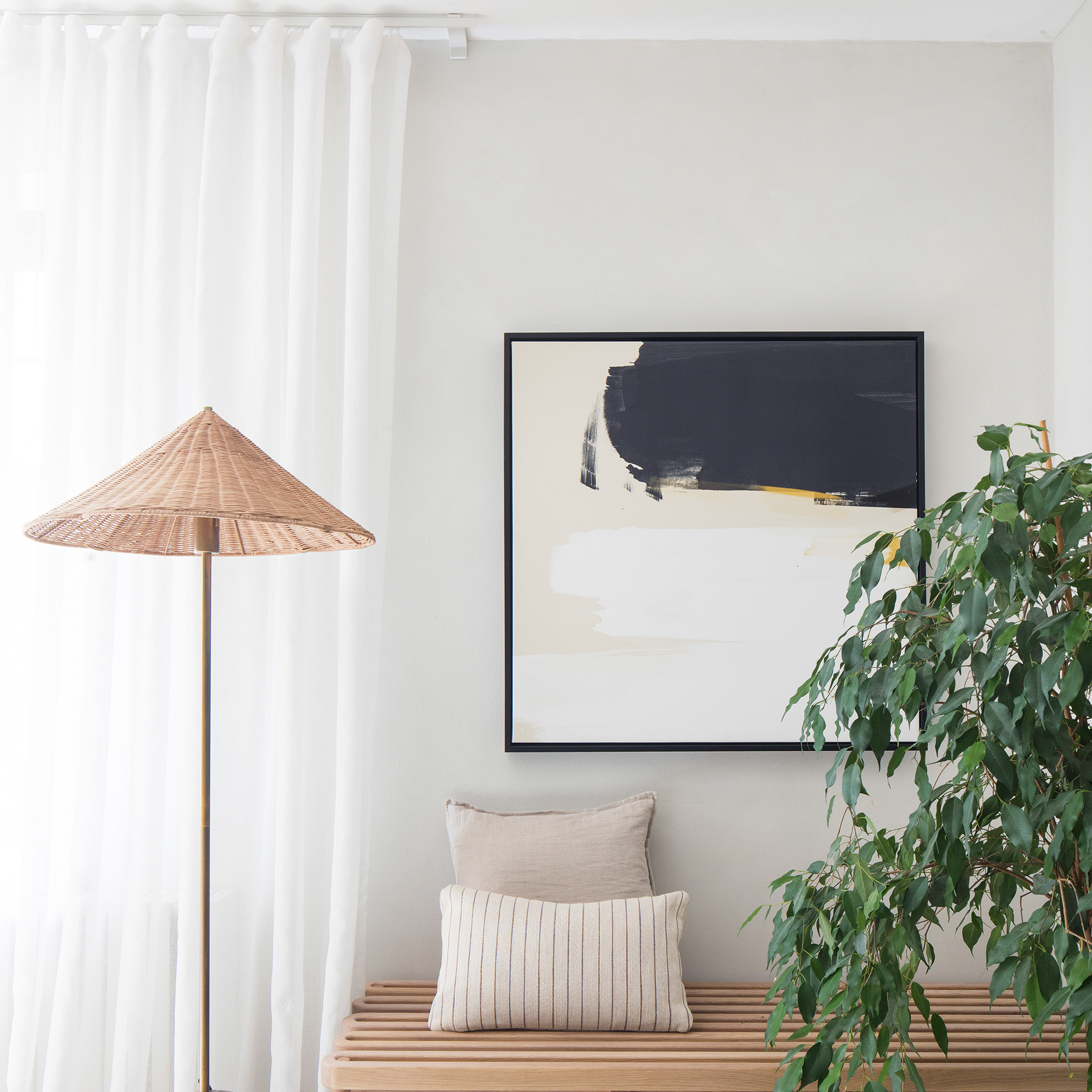
The curtains that you choose and how you hang them can have a huge impact on how tall your ceilings feel. In your living room, try floor length curtains hung as high as possible. Add to the light and airy feel by choosing natural fabrics such as linens, or if you go for a pattern, choose something that runs vertically rather than horizontally, as any horizontal patterns will emphasise the width of the room rather than the height.
‘Don't underestimate the transformative power of curtains! Hanging your curtains as high as possible is a brilliant way to create the illusion of extra height,' agrees Athina from Topology. ‘By extending the line of the window frame all the way to the ceiling, your eye is drawn upwards, making the wall appear longer. Even if your curtains don't quite reach the ceiling, consider installing the curtain rod several inches above the window frame to achieve a similar effect.’
5. Play with colour blocking
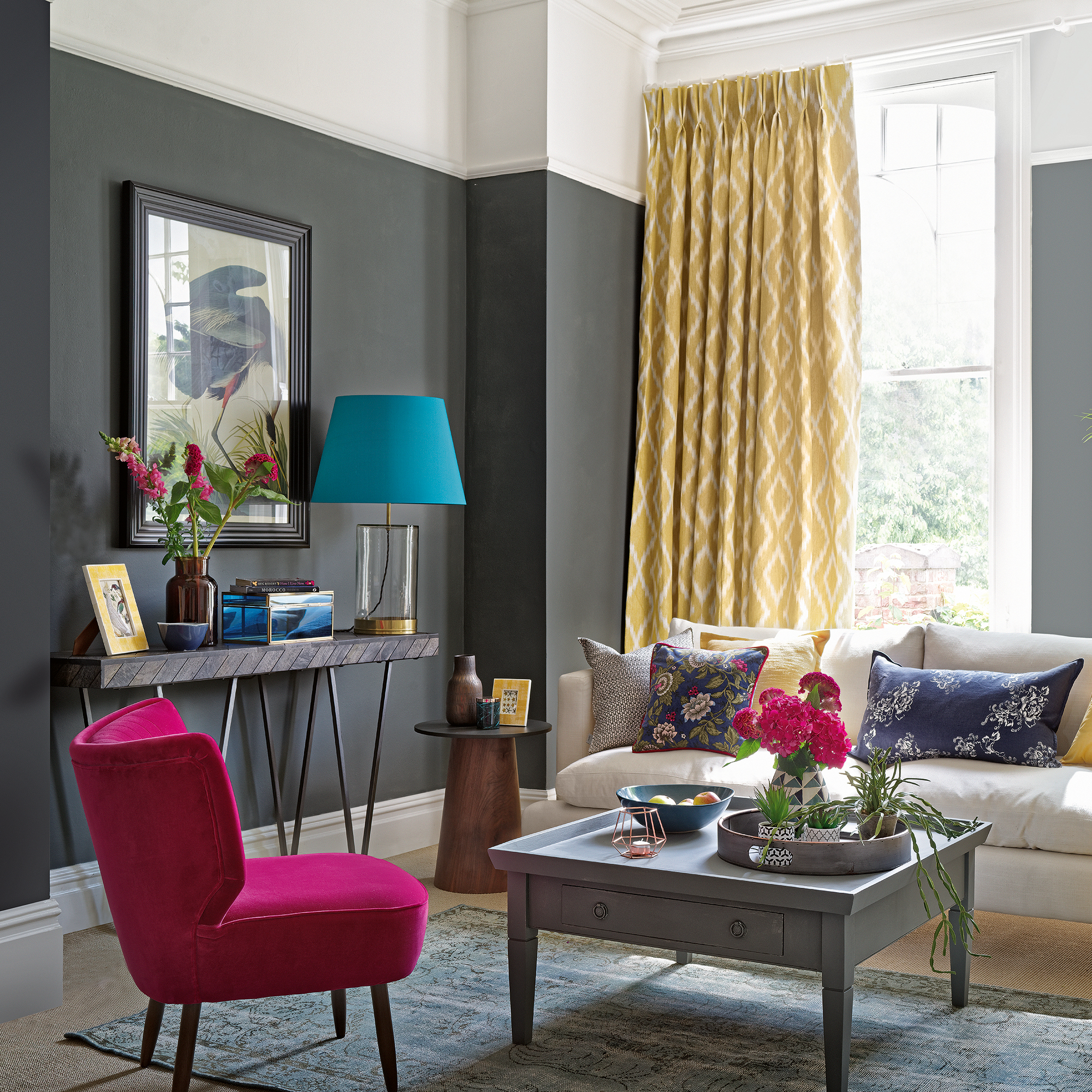
Paint colours are a fantastic tool and can be used in clever ways to impact a room’s proportions. If you’re wondering what colour blocking is, there are a variety of ways in which you can use blocks of colour to make a space feel taller or wider, or to draw attention to specific features.
If you want to use colour in your living room, try a darker colour on the bottom half of the wall, up to the dado rail height. Painting the skirting board and dado the same colour will help create an illusion of taller ceilings too.
6. Be clever with lighting
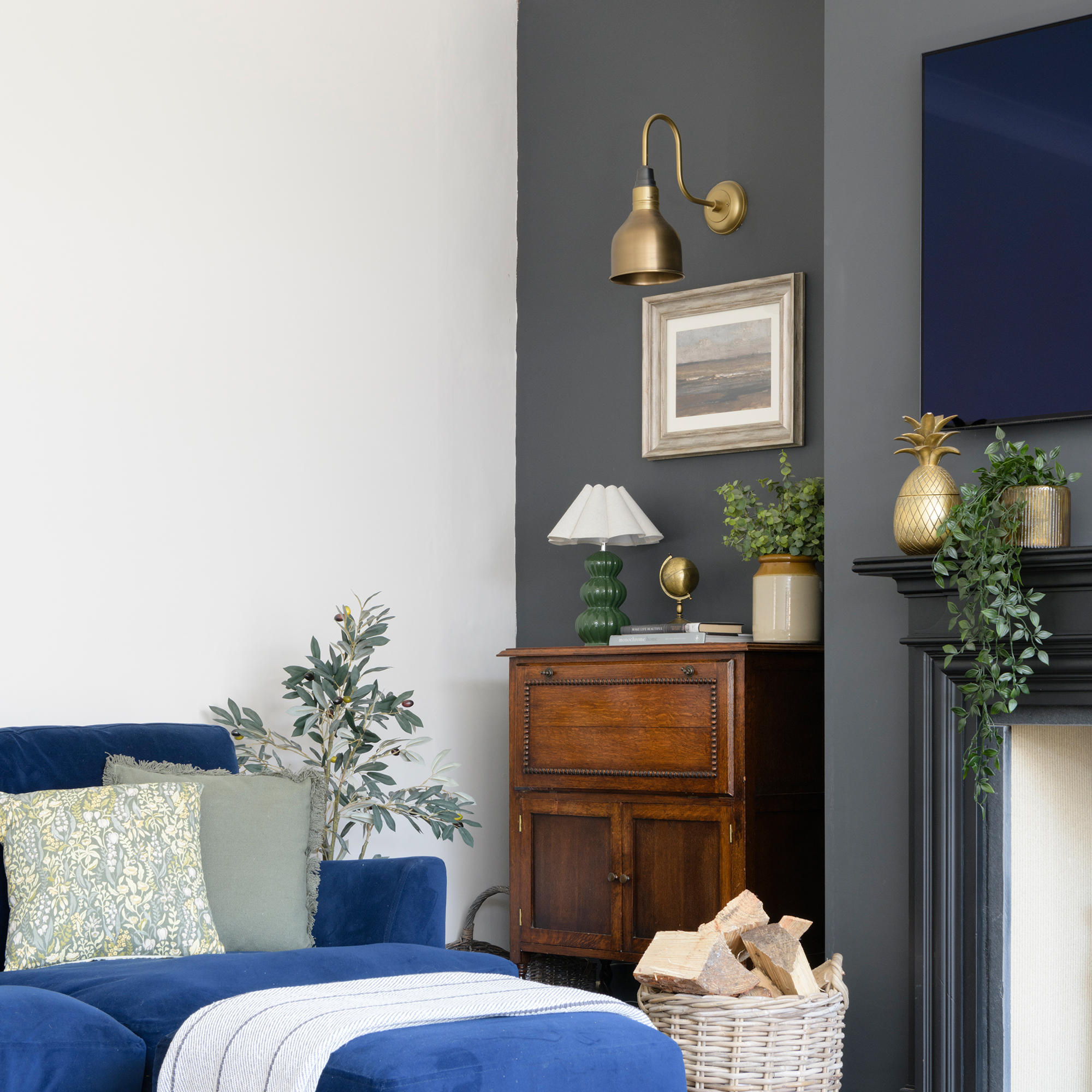
Using pendant lights on low ceilings will only make the ceiling feel even lower. If your property isn’t blessed with high ceilings, opt for spotlights, or if you prefer, keep any other light fittings flush. Alternatively, you could forget about ceiling lights all together, instead layering the living room lighting by using a combination of wall lights, floor and table lamps.
‘Using wall lights and table lamps, especially vintage designs, can add height and bring more character to a room,' explains interior designer Lola Swift. 'Many period properties often have low ceilings, and dimmable lights can make living rooms feel wonderfully cosy.’
7. Use vertical panelling
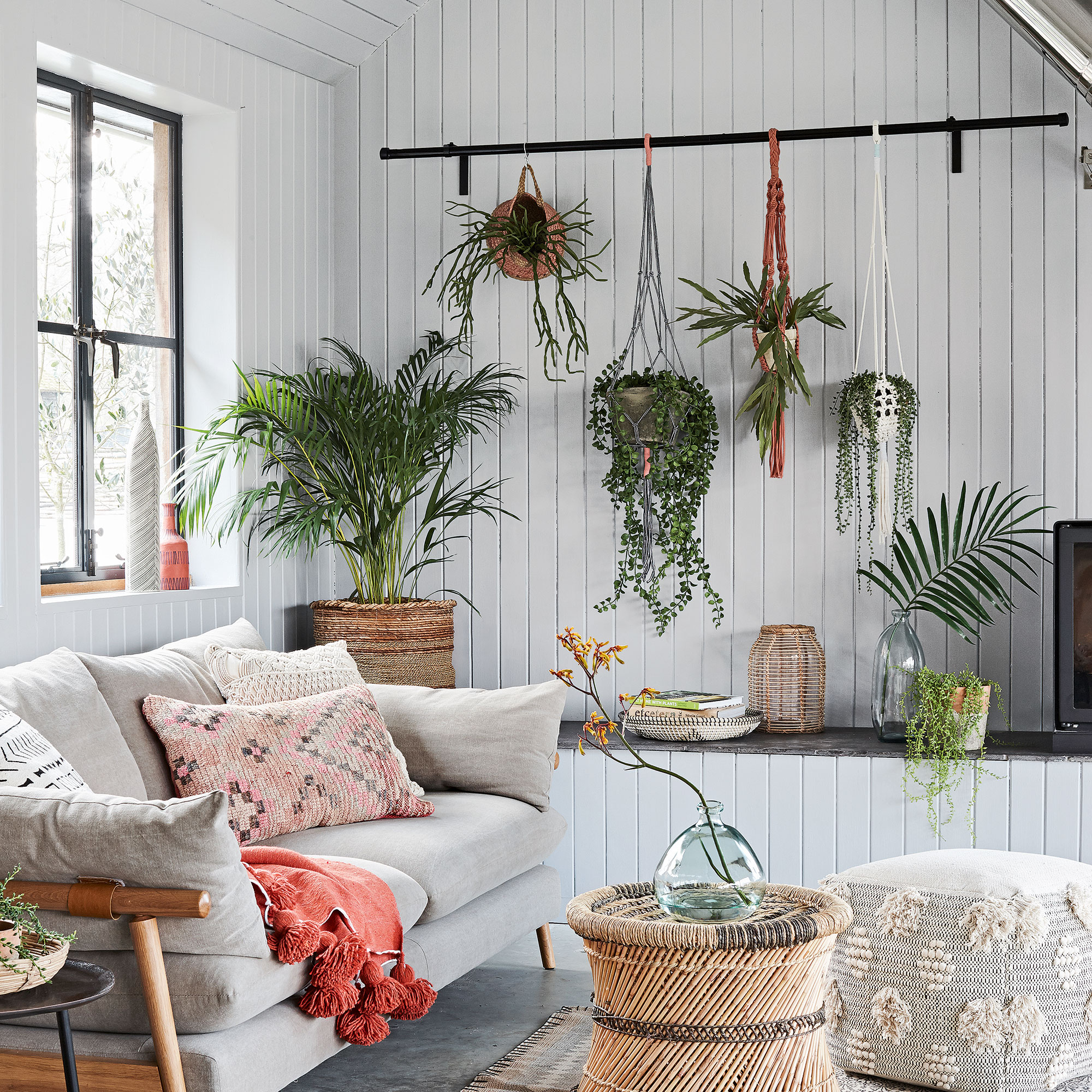
To make living room ceilings look higher, guide the eye up the wall instead of across with vertical wall panelling or wallpapers with a vertical pattern. Try wooden wall slats for a modern look, or for a more traditional style opt for shaker panelling with the panels closer together for a rectangle shape, rather than square.
‘You can instantly make your living room feel taller and more luxurious with vertical panelling’ adds Jessica Davis, founder of The Library Ladder Company. ‘By drawing your eye upward, it creates a spacious, grand atmosphere.'
'Whether you're aiming for a traditional or contemporary interior style, fluted, grooved, or ribbed panelling will add a touch of architectural charm while cleverly creating a feeling of space. It's like a stylish optical illusion for your home.’
8. Hang artwork and mirrors high
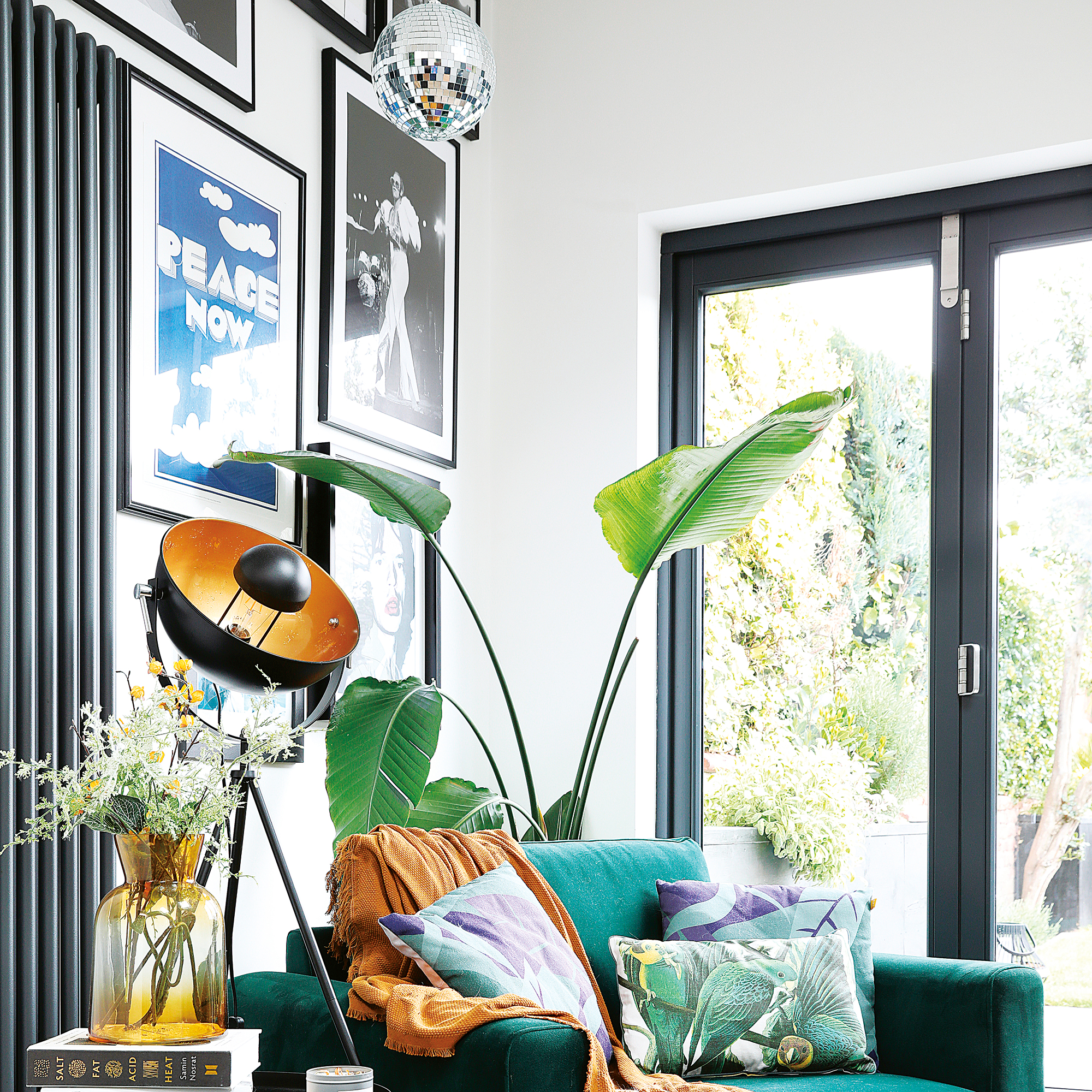
When it comes to adding artwork and mirrors, hang them slightly higher than you usually would. For mirrors, opt for tall and narrow designs placed high on the wall to bounce light around and create the feeling of more space.
The same shape and size works well for artwork too. Putting prints above door openings will also create an illusion of higher ceilings.
9. Add floor-to-ceiling shelving
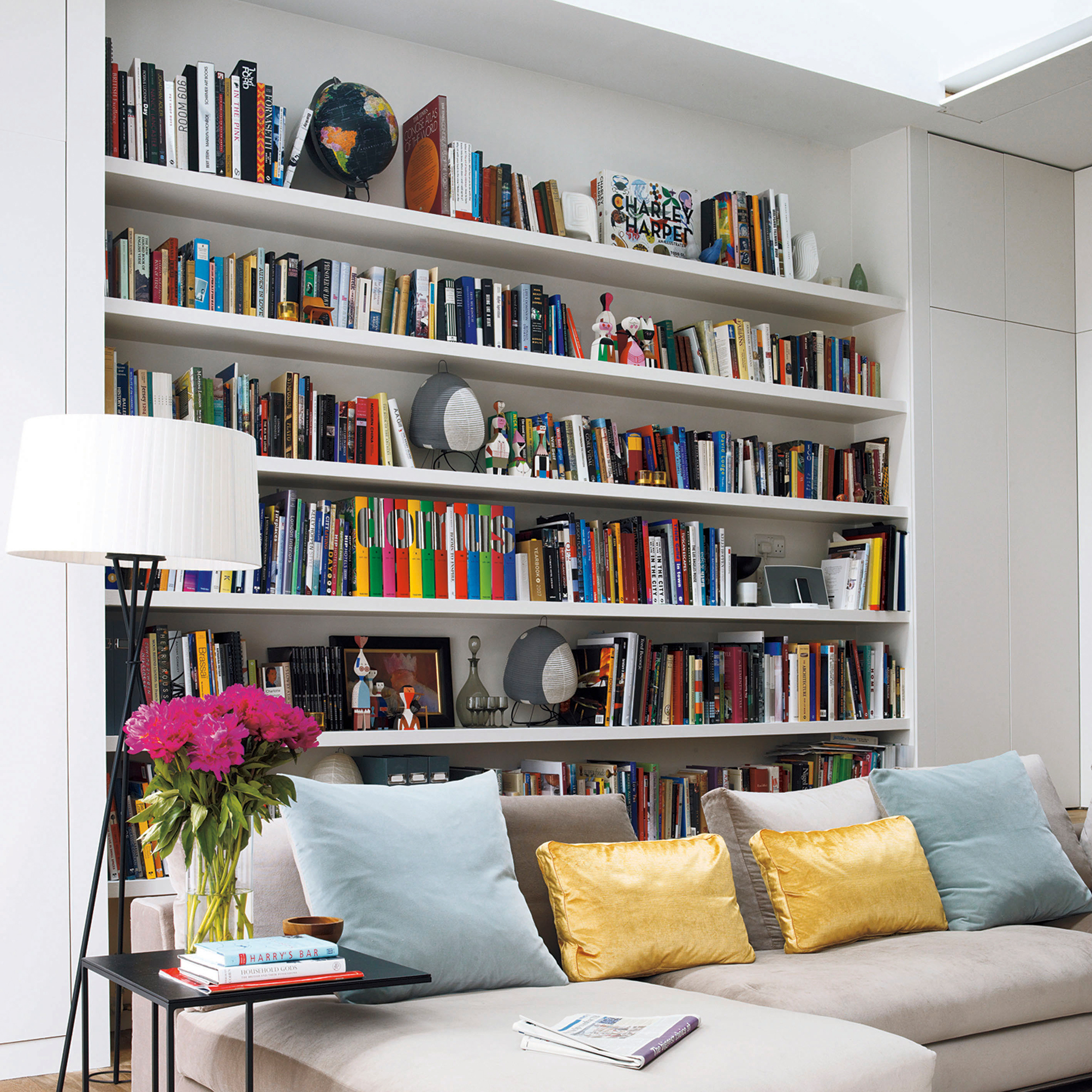
Add interest to the full height of the wall by installing floor to ceiling shelving. Opt for custom built here so there’s no gap at the top. When it comes to styling your shelving, avoid a cluttered look. Instead focus on one or two colours and make sure you place items all the way to the ceiling to extend the wall upwards.
‘Beautiful floor-to-ceiling bookcase shelving with a rolling ladder is a great way to add height to any space,’ advises Jessica from The Library Ladder Company. This idea not only provides ample storage, decluttering your home, but also adds a touch of elegance and functionality while extending the room’s vertical height. It’s a clever addition that enhances both the look and the perceived height of your living area.’
FAQs
How can you disguise low ceilings?
To make low ceilings look higher, focus on the vertical rather than the horizontal, and blur the line between where the ceiling and wall meet. This could include installing vertical panelling, hanging floor to ceiling curtains as high as possible, or using a wallpaper with a pattern that runs vertically.
When it comes to paint, paint ceilings and walls in the same colour. All of this will draw the eye upwards and make the walls appear taller and the ceiling higher.
Does coving make a ceiling look higher?
If you are considering adding coving to make your ceilings look higher, the type of coving and the finish that you choose can have a big impact. Traditionally, coving covers the gap between the ceiling and the wall and sits right in the middle of the two. Adding this detail however could draw attention to a low ceiling.
A simple adjustment will make all the difference - opt for coving that sits mostly on the ceiling, and comes just a small part of the way down the wall. Paint your coving, wall and ceiling all the same colour. When you place coving higher up and keep everything in the same colour, your ceilings will appear higher.
Get the Ideal Home Newsletter
Sign up to our newsletter for style and decor inspiration, house makeovers, project advice and more.

Eilidh Williams has been a freelance lifestyle copywriter for over ten years. Having graduated with a Bachelor of Arts in Creative and Media Writing in 2011, over the years she has written for a variety of unique and inspiring lifestyle brands and publications focusing on fashion, beauty, sustainable and mindful living, and of course homes and interiors.
-
 Will a conservatory add value to your home and how can you maximise it?
Will a conservatory add value to your home and how can you maximise it?This is what the pros say
By Amy Reeves
-
 I’ve been looking for a new signature scent for my home and The White Company's new fragrance is the exact summer holiday smell I needed
I’ve been looking for a new signature scent for my home and The White Company's new fragrance is the exact summer holiday smell I neededSantorini smells fresh, summery and sophisticated
By Kezia Reynolds
-
 How to remove algae from garden walls in five steps – and the cleaning product experts rave about for tackling it fast
How to remove algae from garden walls in five steps – and the cleaning product experts rave about for tackling it fastExperts share their top tips for getting garden walls algae-free
By Katie Sims